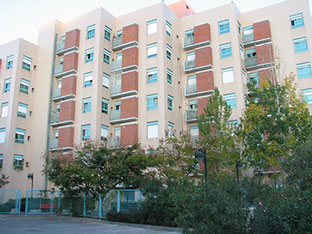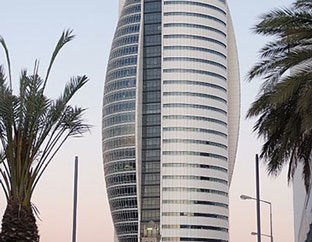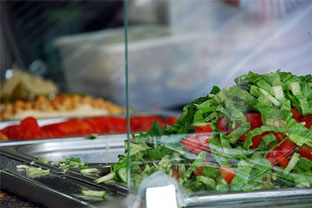Haifa Neighborhoods
Haifa Neighborhoods: Neve Sha’anan, Carmel And Ramot Carmel
Both the Technion and the University of Haifa have contributed to the growth of new neighborhoods and the expansion of older ones. Many residents of these neighborhoods are students or faculty associated with these institutions of higher learning. Other academics and professionals also have chosen to settle in these neighborhoods, and this includes English- and French-speaking immigrants from the West.
Neve Sha’anan
Neve Sha’anan was established in the 1920s, and the neighborhood grew more after the Technion opened nearby in Ramat Nave Sha’anan in 1953. Many of the residents are Western, English-speaking, religious, connected with the Technion or Haifa University, or work as professionals in education, social work, or high-tech companies. There is also a small ultra-orthodox, chareidi population. There are about 15 synagogues in Neve Sha’anan, two mikvehs and a hesder yeshiva headed by Rabbi Eliyahu Zini, the rabbi of the Technion Synagogue. The Rambam Educational and Cultural Center, under an Orthodox framework, has an elementary school that goes up to sixth grade, a nursery school, kindergarten, cultural center, library, sports center and eight synagogues. Many Torah lessons shiurim are given mainly in Hebrew, but there is also one in English. Rabbi Chaim Naftali Weissblum is the rabbi of Nave Sha’anan.
Yizre’eliya

Ramat Alon (Photo: Orrling, CC BY-SA 3.0)
Yizre’eliya was built on the outskirts of Neve Sha’anan and its affordable housing has attracted many young couples. Ramat Alon, a fairly new neighborhood that was built for young families, is next to the older Ziv neighborhood and is part of Ramat Neve Sha’anan. Other new areas are Ramot Sapir, which has eight-story buildings, and Ramot Chen, which has terraced homes. Ziv has a bustling commercial area as well as the Grand Canyon Mall. Ramot Remez, like Ziv, is an older part of Ramot Neve Sha’anan and was built for retired members of the Histadrut Labor Union.
Mordot Neve Sha’anan (Slopes of Neve Sha’anan) has four areas: Tel Amal, mainly settled by new immigrants from the former Soviet Union; Halisa, a Moslem Arab neighborhood; Neve Yosef, built for World War II Jewish veterans; and Neve Paz, built for new immigrants and young families.
Carmel and Ramat HaCarmel (Carmel Heights)
The Carmel neighborhoods are the most populated. They are built along the Carmel ridge and higher slopes and include Carmelia-Vardia, Central Carmel, Western Carmel and French Carmel. The area includes hotels, restaurants and shopping centers as well as museums, parks, the Louis Promenade and the cinematheque. Many Western immigrants have settled here.
Ramat Hacarmel (Carmel Heights) extends from the Central Carmel and the ridge up to the University of Haifa. This is a financially well-off and more exclusive area, especially the Hod Hacarmel Denya neighborhood at the top of the Carmel.

Ahuza Neighbourhood at Night (Photo: David King, CC BY 2.0)
Ahuza
Ahuza was established in the 1920s and was one of the first neighborhoods built on the Carmel. This area is mainly comprised of small apartment buildings with very few private homes. It has a large English-speaking population, both veteran and new immigrants. It is a mixed area, but has a large religious population with over 22 synagogues. The rabbi of Ahuza, Professor Daniel Hershkowitz, is also the rabbi of the Eliyahu Hanavi Synagogue, which has a mikveh and is headquarters of the B’nai Akiva Youth Movement. Ahuza has a religious community center called MAKA that offers activities for all age groups. A few Chabad Hassidim and chareidi Jews also live in Ahuza. Several sub-neighborhoods of Ahuza are Ramat Eshkol, Ramat Begin, Ramat Almogi, Ramat Golda, Savioni, Romema and Central Ahuza.
Haifa Neighborhoods: Did You Know?
The rabbi of Ahuza, Professor Daniel Hershkowitz, is also Israel’s Minister of Science and Technology and a professor of mathematics at the Technion.







